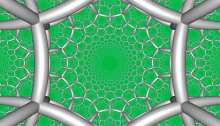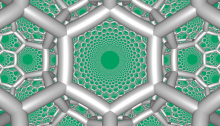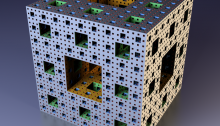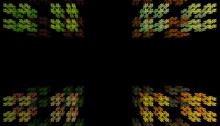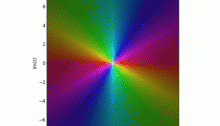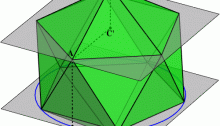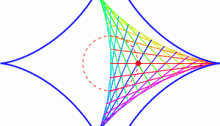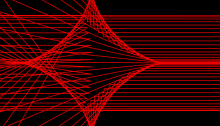{6,3,4} Honeycomb
This is the {6,3,4} honeycomb, drawn by Roice Nelson. A 3-dimensional honeycomb is a way of filling 3d space with polyhedra or infinite sheets of polygons. Besides honeycombs in 3d Euclidean space, we can also have honeycombs in 3d hyperbolic space, a non-Euclidean geometry with constant negative curvature. The {6,3,4} honeycomb lives in hyperbolic space, and each vertex has 6 edges coming out of it, just as if you drew edges from the middle of an octahedron to its corners.

